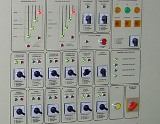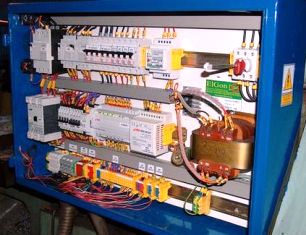Setting up relay circuits
 In automation systems, relay diagrams are often used, that is, diagrams that show the communication and interaction of relay devices operating on the "on-off" principle, otherwise having a relay characteristic. Relay devices are mainly used in automatic and remote control circuits and in alarm and interlock circuits.
In automation systems, relay diagrams are often used, that is, diagrams that show the communication and interaction of relay devices operating on the "on-off" principle, otherwise having a relay characteristic. Relay devices are mainly used in automatic and remote control circuits and in alarm and interlock circuits.
Automatic control schemes are used to control the operation of various drive devices (for example, electric motors, actuators), for programmed automatic control of technological devices with periodic action, etc. In addition to the automatic mode of operation, the scheme usually provides for operational local and centralized control.
Alarm circuits are used to signal the status of technological parameters, operating modes of units, etc. The output of the alarm circuit can be one of three signals: normal mode, warning and emergency.
The normal mode signal is issued by the circuit when the monitored parameter is in the normal mode zone., in advance — when the monitored parameter has passed from the normal mode zone to the permissible zone, the alarm signal notifies that the monitored parameter leaves the permissible mode zone. Simultaneously with the occurrence of an alarm, the circuit can ensure the operation of the protection. Various light and sound devices (electric lamps, buzzers, bells, etc.) are commonly used as signaling devices in alarm circuits.
When setting up relay circuits, they study the project documentation, check, check individual elements of the circuit, check and analyze the entire circuit, test and put the circuit into operation.
Relay circuits are checked and analyzed to identify installation and circuit errors (short circuits, inconsistency of the operating voltage with the nominal voltage, incorrect operation of protective devices, inconsistency of the electrical circuit with the technical specifications, etc.).
For complex circuits, the relay rack modeling method and the algebraic circuit method are recommended. For the analysis of relay circuits, use the computer-applied method of element-code analysis.
Using this method, each bipolar element of the relay circuit is replaced by a digital code consisting of two parts - a constant in which all the functional characteristics of this element are recorded, and a variable in which the change in the state of the element is recorded during of circuit operation. As a result, the relay circuit is replaced by a digital analog — a code table that changes from cycle to cycle.To analyze the operation of the circuit, the processing rules of code tables are used.
See also: Regulation of electric drives with relay-contactor control, Fault finding in relay-contactor circuits

